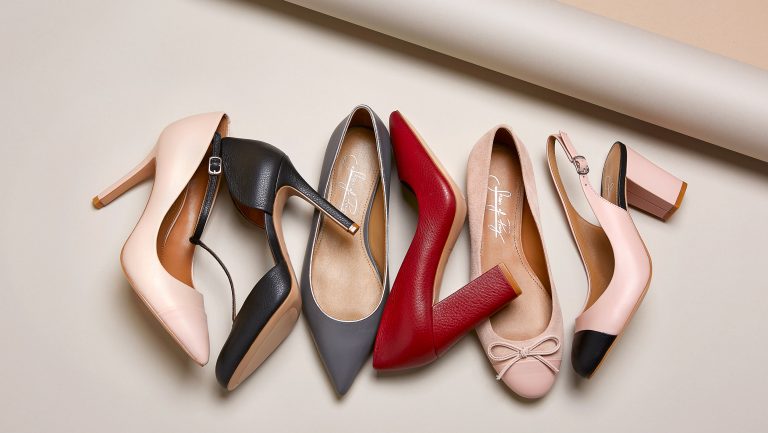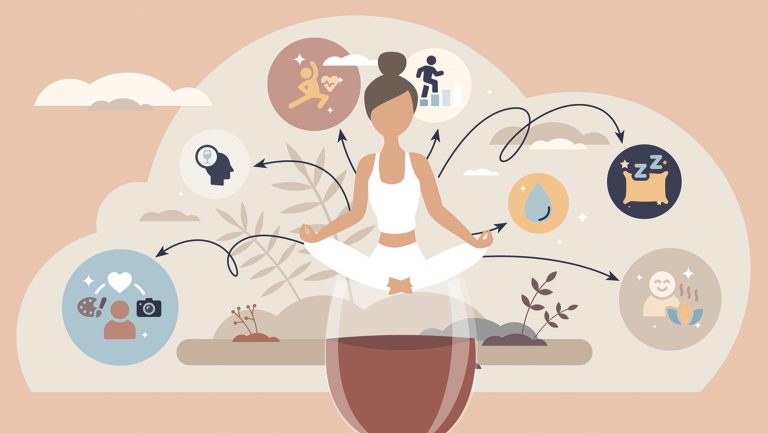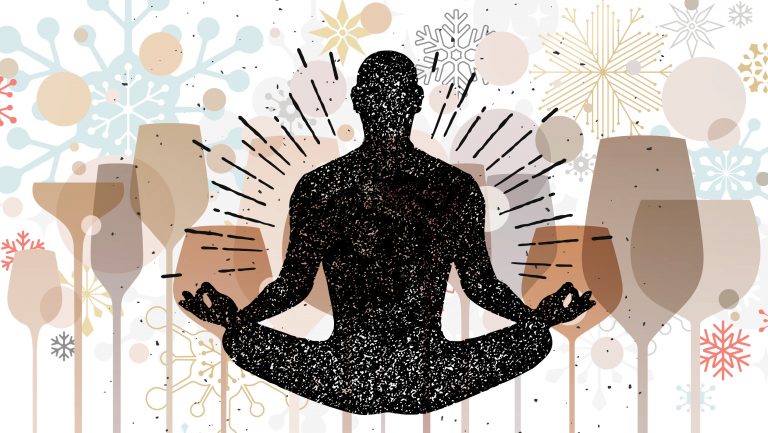Anyone who has worked in the service industry knows the pain that the wrong shoes can cause over a long shift. Sommeliers and bartenders have physically demanding jobs that are especially hard on their feet, often in environments where looking polished is important, so broken-in sneakers aren’t an option. Making the effort to care for your feet can help you stay comfortable and productive throughout your shift. SevenFifty Daily asked sommeliers and bartenders across the country, as well as a podiatrist, for their best foot care tips and product recommendations. Here’s what they had to say about caring for hardworking feet.
1. Wear Compression Socks
Teri Perona, a bartender at The Bluebird Cocktail Room in Baltimore, Maryland, says the best way to prevent sore feet is to wear compression socks. These stretchy pressure stockings gently compress your foot and ankle, then gradually get looser further up your leg. Wearing them can help improve blood flow, which can lessen pain and swelling in your feet and lower legs. Says Perona, “I think the knee-high ones work better than the short versions.”
2. Find the Right Shoes
Richard Mendelsohn, D.P.M, a board-certified podiatrist based in Northern Virginia, emphasizes the importance of making sure shoes fit properly for their intended use. “Shoes that are too small will put pressure on your feet in the wrong spots and cause discomfort over time,” says Dr. Mendelsohn, adding that flat shoes like TOMS are “basically just covers for your feet” and don’t provide the arch support you need when standing for long periods. “If you’re moving around, the best thing to do is buy a good shoe that’s big enough and use an orthotic insert.” He also recommends getting professionally fitted for shoes once a year.

Don’t miss the latest drinks industry news and insights. Sign up for our award-winning newsletters and get insider intel, resources, and trends delivered to your inbox every week.
Robert Flood, the food and beverage manager for Baranof Fish Market in Sitka, Alaska, cautions that more expensive shoes aren’t always better. “The [priciest] pair of shoes I ever bought in my life were Johnston & Murphy,” says Flood, adding that they cost $350. “I think I wore them twice before I said, These suck, and went back to my Clarks from DSW. That’s all I wear.” Flood and Mendelsohn agree that Clarks is a brand that’s solid, supportive, affordable, and available in a range of styles. In general, says Mendelsohn, good quality leather shoes provide arch support that flat shoes don’t. Leather, he says, also offers a better fit because it retains its shape over more wearings than other materials.
If heels are a must, Mendelsohn says to avoid anything over two inches. Five-inch heels, he emphasizes, are “unsafe and not recommended.” Wedge-style heels are the best choice, he says, noting that chunkier heels overall are better than spiky heels because they put less pressure on the heels of your feet. Mendelsohn also recommends inserting pads in high-heeled shoes to cushion the balls of the feet.
Amanda McCrossin, a sommelier at Press restaurant in St. Helena, California, recommends Shoes of Prey. “[The company] lets you customize your shoes to almost your exact specifications,” she says. “From heel height to width, toe shape, colors, materials—you name it, they can do it. They custom-create your shoe and send it to you within two weeks with all the necessary accessories for the perfect fit, from foot pads to heel gels.”

For additional toe padding while wearing heels, McCrossin recommends using a pair of Profoot Toe Pouches, or wraparound gel cushions. “There are several on the market—those, specifically, are the best,” she says, adding that she often gives them as gifts to friends in the service industry.
3. Use an Insole
Mendelsohn says that most people won’t find the support they need from shoes right off the shelf, so he recommends using orthotic insoles to keep ligaments and arches from being strained. He mentions Powerstep insoles, in particular, saying, “Those are the most accessible ones. I wouldn’t recommend spending a tremendous amount for an over-the-counter orthotic—$40 to $50 is adequate.” Make sure that your shoes are large enough to comfortably fit the insoles.
4. Switch It Up
Courtney Humiston, the general manager and wine director at Maybeck’s in San Francisco, believes that maintaining a shoe rotation can also be beneficial to those who work on the floor. “I find that rotating shoes, even if it’s two of the same style, helps your feet and back,” she says. “I learned this when I was training for a marathon, since all shoes stress you in slightly different ways.” Mendelsohn also says that alternating between several pairs of shoes is ideal. Not only does it help mitigate foot stress, he says, but it helps leather shoes keep their shape and structure longer.

How Wine and Spirits Professionals Can Better Protect Their Teeth
Dentists offer advice on problems from teeth staining to enamel erosion
Humiston adds that she keeps a pair of “still-professional but even more comfortable shoes, like rubber-soled leather ankle booties,” in her wine room to wear before and after service. “It feels good to change your shoes à la Mr. Rogers as part of your pre-service ritual,” she says. “And it feels super good to slip [the more comfortable shoes] on after service!”
Perona concurs: “Having the chance to look forward to the comfy sandals or other shoes you’ve brought with you to change into at the end of the night? So priceless.”

5. Start Rolling
Self-massage with acupressure techniques and a massage ball can help relax muscles, reduce tension, and boost circulation. McCrossin recommends the Due North Foot Rubz Hand and Foot Massage Ball. “This little foot ball is amazing,” she says, noting that she uses it before and after she hits the floor. “Wearing heels all night definitely affects not just your feet but your whole body. I roll my feet out with this thing and then use a foam roller [on my back and legs] to get the downstream-upstream effect. You can’t just target one area to treat—you have to tend to your whole body.” Perona recommends foot rolling as well, but she favors a lacrosse ball, saying, “It hurts so good!”
6. Practice Good Foot Hygiene
Good foot hygiene, Mendelsohn points out, is key. He encourages somms, bartenders, and others working in the service industry to change socks if their feet sweat a lot during service. To prevent painful, infection-prone ingrown toenails, he says, “don’t cut your toenails too short.” In addition, Mendelsohn says, if you have severe foot pain that doesn’t go away after a restful day off, or an ingrown nail that feels tender or infected, don’t wait for it to resolve itself. “Try to catch it early, before it gets to be a problem. Don’t let it go on too long.” If you do have a problem with your feet, Mendelsohn says to make an appointment with a foot specialist to address it as soon as possible. Finally, for a preventive measure, he recommends incorporating foot rolling exercises and calf stretching into your regular routine.

Dispatch
Sign up for our award-winning newsletter
Don’t miss the latest drinks industry news and insights—delivered to your inbox every week.
Diane McMartin is a wine writer and educator and the author of This Calls for a Drink! (Workman). She is a graduate of the Culinary Institute of America’s Wine and Beverage Certificate Program and a Certified Sommelier through the Court of Master Sommeliers. McMartin has spent more than a decade working in various positions in both restaurants and retail stores. She can be found @dianemcmartin on Instagram.







